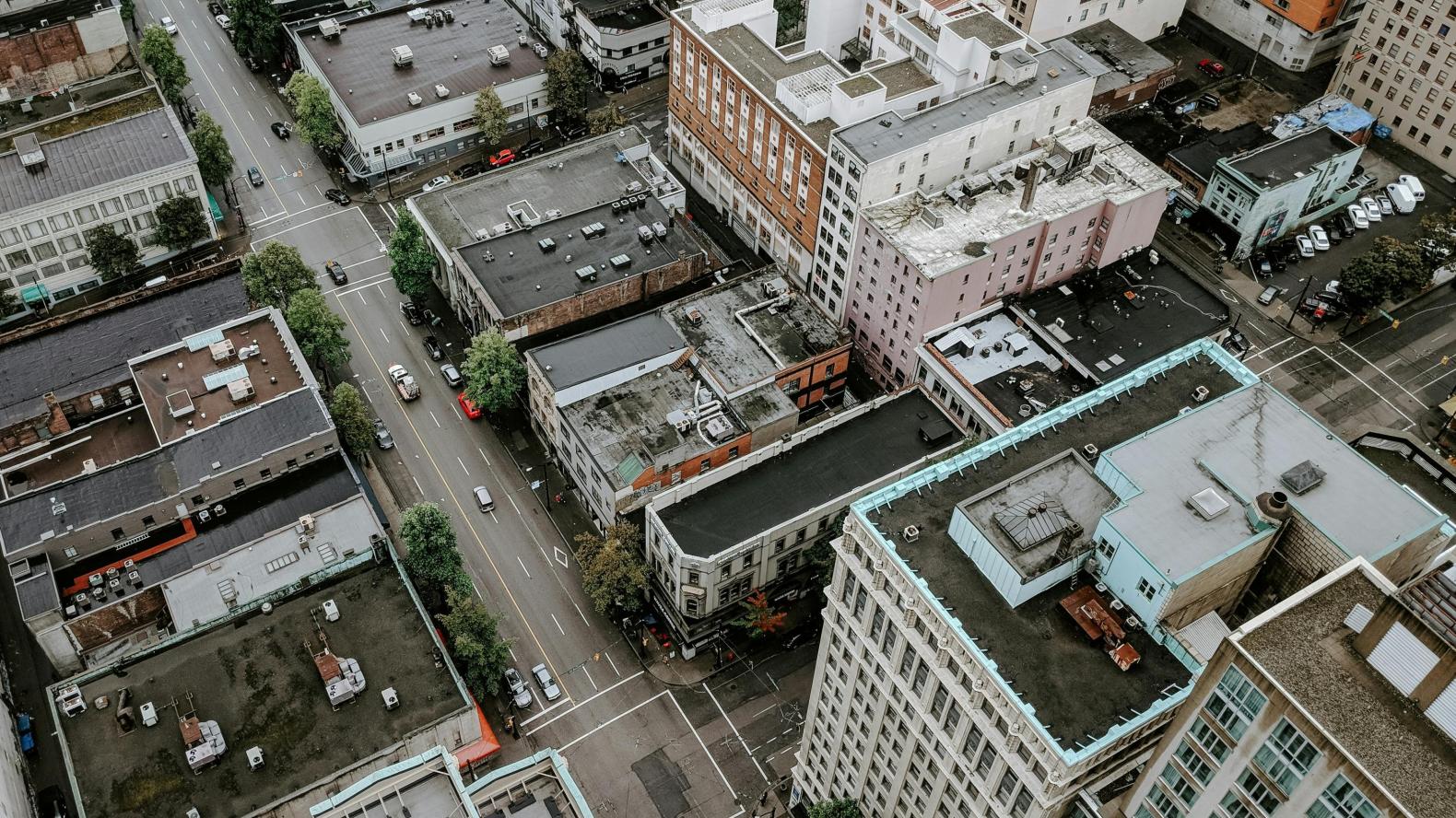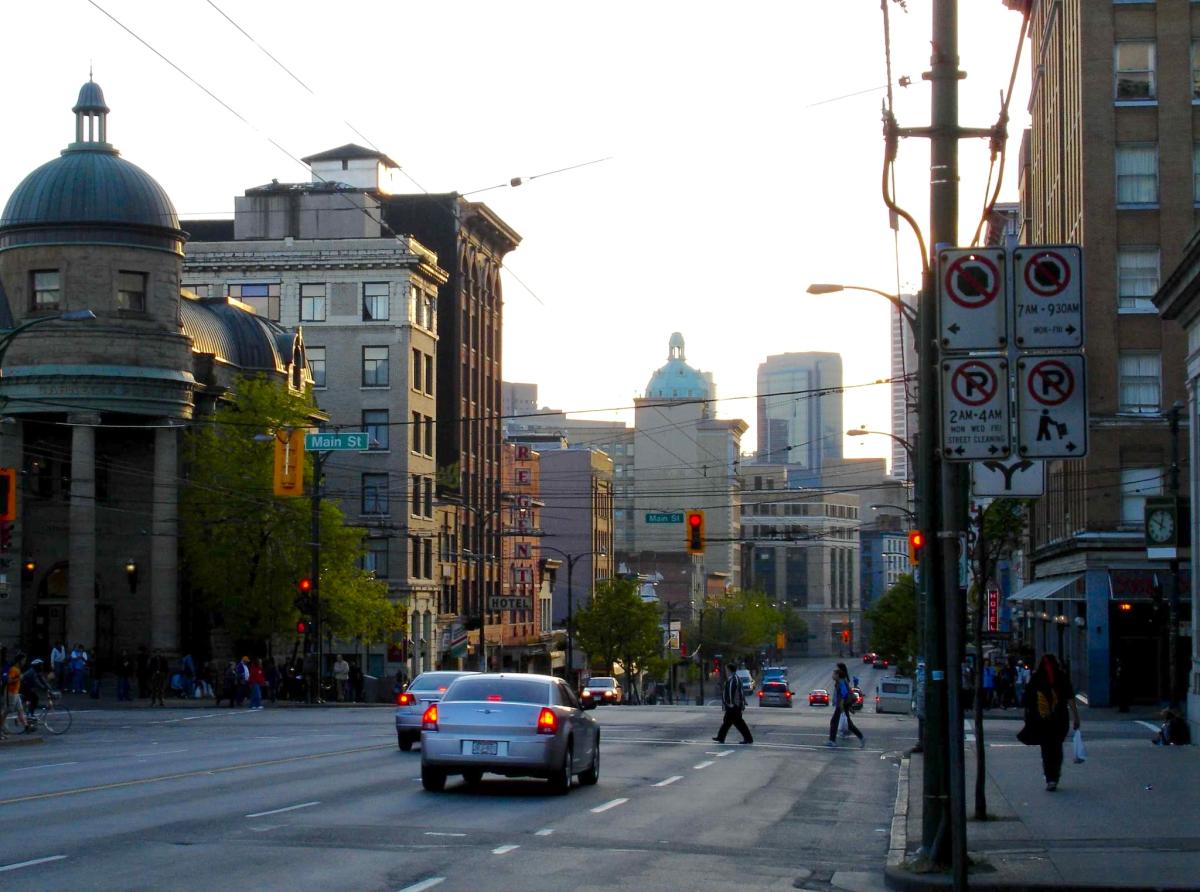
Over the last year, the Climate Equity Action and Resilience (CLEAR) project initiated by UBC sought input from residents of Vancouver’s Downtown Eastside (DTES) on how climate change affects their lives.
Authors: Tim Linsell and Tommy Yu.
UBC students (including Climate Action Mobilizers, Sustainability Ambassadors, Sustainability Scholars and Learning Exchange students) organized the climate activities under the auspices of CLEAR, a project of UBC’s Sustainability Hub, the UBC Learning Exchange, EMBERS Eastside Works, Working Gear, Recycling Alternative, and Union Gospel Mission. CLEAR cultivates climate justice in the DTES by working to centre community voices in climate policy and making UBC climate research accessible.
A warming neighbourhood
The DTES is Vancouver’s historic heart. Consisting of seven distinct sub-areas and a home to Indigenous peoples since time immemorial, it is a mosaic of diverse, closely-knit communities with a rich cultural heritage and a vibrant art scene.
For this neighbourhood the climate emergency is here and now. Impacts are most acute for those experiencing intersecting forms of marginalization including low median income, encroaching gentrification, a toxic drug supply, and intergenerational trauma.
This interplay deepens vulnerability to climate impacts. Exposure and sensitivity to extreme weather events are amplified by limited housing options and health issues such as chronic disease and substance use disorder. Local capacity to adapt is hindered by precarious living conditions and distance from decision making authority.
Additionally, the DTES is one of the least forested areas in the city. Combined with an expansive hardscape and closely packed buildings, the neighbourhood is the archetypal urban heat island which absorbs and traps heat in place. Urban heat islands can be up to 12°C hotter than shaded areas on a hot day and fail to cool sufficiently to allow residents to recover at night. Such areas were identified as sites of a large proportion of deaths during the 2021 heat dome.This passive heat exchange strategy reduces the building’s annual net heating load by 34%, and annual net cooling load by 17% and contributes to an annual energy consumption reduction of 11%. In addition, this strategy alleviates peak thermal loads on the campus district energy system, curbing overall energy costs by 31%. This innovative approach is complemented by strategies aimed at contributing to energy performance, including connection to the campus’ low-carbon energy supply system, a high-performance envelope, active heat recovery, efficient lighting design and extensive occupancy and daylight controls.
Partnering for Climate Justice
Climate justice seeks to centre considerations of equity in the recognition of diverse identities and life situations as they are impacted by the climate emergency. CLEAR works with DTES residents who experience the extreme inequality of climate impacts and was convened due to the need for justice to be at the core of climate responses. Working with UBC students through the Climate Action Mobilizers, Sustainability Ambassadors, and Sustainability Scholars programs, one activity stream of CLEAR seeks to understand the experience of climate impacts in the neighbourhood and focus on policy responses. (Other activity streams include applied research reports, peer advocates working in the DTES community, campaigns to draw attention to the links between climate change and homelessness, and learning from other community-city-university climate partnerships).
To gather insights from their lived experiences, four pop-up events in the DTES engaged with residents over the past year with attendance ranging from 100 - 250 participants at each event. Residents shared their experiences and UBC students collated and analyzed their responses, leading to the insights below.
Three Key Takeaways from Engagement Activities
- Downtown Eastside residents are talking about the felt impacts of climate change
During one of the pop-up activities, 62% of the 79 respondents answered that they were talking about climate change. Within this group, 52% of the conversations focused on the felt impacts of climate change in the community such as extreme heat and wildfire smoke, with just 9% focusing on the drivers of these changes.
This suggests that the climate emergency is generally understood through the lens of the impacts imposed by it.
2. The Downtown Eastside needs more cooling support during extreme heat
An overwhelming majority - 81% - of the 96 respondents in another pop-up activity told us that the best way that the City of Vancouver could support the neighbourhood during extreme heat was to provide cooling support. Though access to housing (7%), accessibility considerations for existing supports (7%), and medical care (6%) were also raised as ways in which support could be provided, the data show that residents prioritize the immediate necessity of cooling off during extreme heat.
Notably, 59% of responses spoke of a need for water - either to drink or to allow for misting stations. Further, 26% stated a need for improved access to indoor cooling infrastructure, and 18% indicated a desire for more shaded areas and green space. Similarly, 71% of community members rated a water bottle as the most useful element of a six-piece DIY cooling kit, showing that water access remains an important consideration for local climate adaptation.
3. Accessible means of lowering indoor temperatures in the neighbourhood are sparse
In another activity, 49% of respondents prioritized water as a means of keeping cool, while 17% mentioned the use of air-conditioned spaces or fans. Among those who were able to benefit from such mechanical cooling strategies, 55% mentioned using a fan whereas 45% responded that they accessed air-conditioned spaces.
This suggests indoor environments are ill-equipped to provide respite from increasingly frequent and prolonged extreme heat events. Increasing ventilation and air flow in DTES spaces is a priority, and other DIY cooling options should also be considered.
The path forward – Three short term actions
Vancouver has a strong history of climate action. Now, justice in climate efforts must be approached with the same ambition. Centering feedback from disproportionately impacted communities is crucial, as it bridges the gap between those most affected and the decisions made. The urgency of the climate crisis, highlighted by events like the 2021 heat dome, demands immediate adaptation. Place-based research is essential in shaping policies that address the unique challenges of each neighbourhood.
Increasing access to drinking water in the Downtown Eastside
Accessible water for hydration and cooling via misting occupied an outsized role in the feedback received at CLEAR engagement events.
A 2022 UBC Sustainability Scholar report investigating equitable and accessible drinking fountain placement recommended the installation of four new fountains across the DTES: at Main Street and Union Street, Columbia Street and Keefer Street, Cordova Street and Abbott Street, and Main Street and E Hastings Street. Only one of these fountains has been installed since the report was completed. Fulfilling the rest is a priority.
Prolonged drought conditions will keep impacting the region. Similar to the temporary fountains currently implemented during summer months, attention should also be paid to the placement of temporary misting stations in areas in which community members already gather. At CLEAR “neighbourhood cooldowns” community members will identify test locations for all extreme heat exposure responses.
Increasing indoor cooling infrastructure
Reducing indoor temperatures can lower the risk of heat-related mortality. The results from CLEAR engagements suggest that even rudimentary indoor cooling infrastructure is often lacking in the neighbourhood.
This comes as no surprise. Much of Vancouver’s architecture was not designed for extreme heat due to a historically mild climate. Among those who died in the 2021 heat dome, a significant majority did not have access to air-conditioning. When indoor spaces fail to offer respite from extreme heat, the risk of heat-related illness increases significantly.
A variety of intersecting factors must be considered in reducing indoor temperatures such as building layout, architectural design, cardinal orientation, and size.
In line with recent revisions to provincial building codes, a 2024 UBC Sustainability Scholar Report emphasizes that new buildings should be designed to accommodate a hotter climate. Crucially, it also makes recommendations for low-cost, DIY, strategies to bring down the heat in existing buildings. This includes the use of recycled Tetra Paks to insulate walls and damp cloths hung in windows to allow for evaporative cooling. This study offers readily accessible retrofit strategies that can be rapidly implemented alongside longer-term retrofit strategies, such as painting roofs with white, heat reflective paint.
Thorough implementation of such strategies can be encouraged by legislating tenants’ rights to climate-ready housing. By introducing a maximum - and minimum - indoor temperature threshold to the Residential Tenancy Act, the interests of tenants and landlords may be brought into closer alignment on climate readiness and retrofit strategies. The City of Vancouver has now passed a resolution seeking authority from the province to establish these thresholds.

Incorporate more urban green spaces in the Downtown Eastside
Green spaces are an essential form of cooling support, and CLEAR’s engagement results show that much more is needed in the neighbourhood. The Local Restorative Nature (LRN) index lists the DTES as among the neighbourhoods with the greatest need for therapeutic green spaces and the least coverage of such areas, with some sections of East Hastings Street having little or no tree canopy cover.
Research has also confirmed that increasing urban green spaces in the DTES is urgent and actionable. A recent student-led project at UBC on patio renovation at the Carnegie Centre, integrates climate justice with Indigenous ecological knowledge. This offers an example of how this work can address urban heat islands and incorporate Indigenous knowledge in the neighbourhood.
Urban greening is challenging due to land use competition and the difficulty of keeping street trees alive. With uneven distribution of trees across the city, research suggests modifying surfaces surrounding street trees to better allow growth, sidewalk repair, and green rainwater infrastructure. Other possibilities include the implementation of raised planting beds along the sidewalk in heavily trafficked areas.
These reports recommend more effective ways to address urban greening in the neighbourhood, in a way that confers benefits long into the future.
Disproportionate impacts demand justice-oriented policymaking
During the devastating 2021 heat dome, 619 lives were lost across the province. DTES residents faced higher emergency admissions relative to the rest of the city, highlighting how marginalized communities are hit hardest by the climate emergency. Given 12 consecutive months of record shattering global temperatures, it is evident that extreme weather events are becoming increasingly common.
CLEAR’s engagement shows that accessible water, cooling infrastructure, and urban tree canopy are key for climate adaptation in this area.
For a just and equitable climate response, the City must center DTES voices and the lessons from 2021 more clearly. Without this focus these same communities will continue to face the consequences.